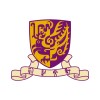Complex Exercise Intervention to Normalize Blood Pressure and Nocturnal Dipping in Patients With Hypertension (END-HT)
Hypertension

About this trial
This is an interventional treatment trial for Hypertension
Eligibility Criteria
Inclusion Criteria:
- SBP non-dippers
- self-reported exercise intensity and duration less than the World Health Organization recommendation, which is exercise of moderate intensity less than 150minutes/week OR exercise of vigorous intensity of less than 75 minutes/week
- Used any mobile apps on their phone (because the intervention involve use of apps to monitor and remind regular exercise)
Exclusion Criteria
- Patients with diagnosed chronic obstructive lung disease and recent stroke (within last 12 months) because other evidence-proven and well-structured programmes are implemented for these patients in the hospital authority in Hong Kong
Occupational drivers - because they need to hold their arm still during ABPM and this may be hazardous for drivers
- night-time workers
- diagnosed Obstructive Sleep Apnea
- Patients on anti-coagulants - because ABPM may induce bruises
- Patients on 3 or more medications for hypertension (on maximum tolerable doses) - these patients may have secondary HT and represent a different spectrum of organic diseases
- Patients with SBP >180mmHg or DBP >110mmHg - drug titration is not allowed during the 12-week program and these patients need early drug treatment
Patient with DM - these patients will be arranged to have another EIM program especially designed for their DM.
- Patients with active spinal cord compression or spinal radiculopathy because they may not be suitable to join some exercise
- patients with atrial fibrillation are excluded because these patients have increased BP variability and may have different dipping behaviour
- patients with metallic implants or pacemakers are excluded as they are not suitable for MRI
To maximize safety of patients, patients who are relatively contraindicated according to AHA will also be excluded
- acute myocardial infarction in last 6 months
- ongoing angina
- uncontrolled cardiac arrhythmia
- acute diseases including known active endocarditis/acute pulmonary embolism, pulmonary infarction, deep vein thrombosis, acute aortic dissection, acute myocarditis
- known aortic stenosis
- known heart failure
- known obstructive left main coronary artery stenosis
- uncontrolled ventricular rates
- complete heart block
- known hypertrophic obstructive cardiomyopathy
- mental impairment that limit co-operation
- resting blood pressure with systolic blood pressure >180mmHg or diastolic blood pressure >110mmHg
- known anemia with hemoglobin level less than 11gm/dL
- known uncorrected electrolyte imbalance, and
- known uncontrolled hyperthyroidism.
Sites / Locations
- Lek Yuen ClinicRecruiting
Arms of the Study
Arm 1
Arm 2
Experimental
No Intervention
EIM group
usual care
patients with Hypertension (HT) will be recruited by a trained nurse when the patient attends the yearly to bi-yearly complication screening program called the risk assessment and management program (RAMP) program. This program is provided to all patients with HT, who are seen in the Government-funded primary care clinics in Hong Kong. The nurse will encourage the patient by motivational interviewing techniques and prescribe exercise. Combined exercise skills will be taught in the 12-week weekly exercise classes by certified physical trainers. Peer support is encouraged during and after the 12-week program. Regular feedback, prompting and problem solving will be provided by the nurse at 3m, 6m, and 12m. Exercise level will be monitored by validated wrist trackers to feedback participants, nurse and physical trainer by mobile apps and website. Resources to exercise will be made known to patients by apps, website and healthcare professionals.
There is no extra intervention to patients allocated in this arm, except that they receive information and advice on lifestyle changes including benefits from exercise from the nurse at recruitment as stated above. Participants in both arms will have no changes in medication within the first 12-week to determine the BP difference between the two groups. In Hong Kong, patients have unlimited access to emergency department and general outpatient services. All patients with HT receive RAMP program counselling and screening every 1-2 years. These are not limited by the current trial.
Outcomes
Primary Outcome Measures
Secondary Outcome Measures
Full Information
1. Study Identification
2. Study Status
3. Sponsor/Collaborators
4. Oversight
5. Study Description
6. Conditions and Keywords
7. Study Design
8. Arms, Groups, and Interventions
10. Eligibility
12. IPD Sharing Statement
Learn more about this trial
